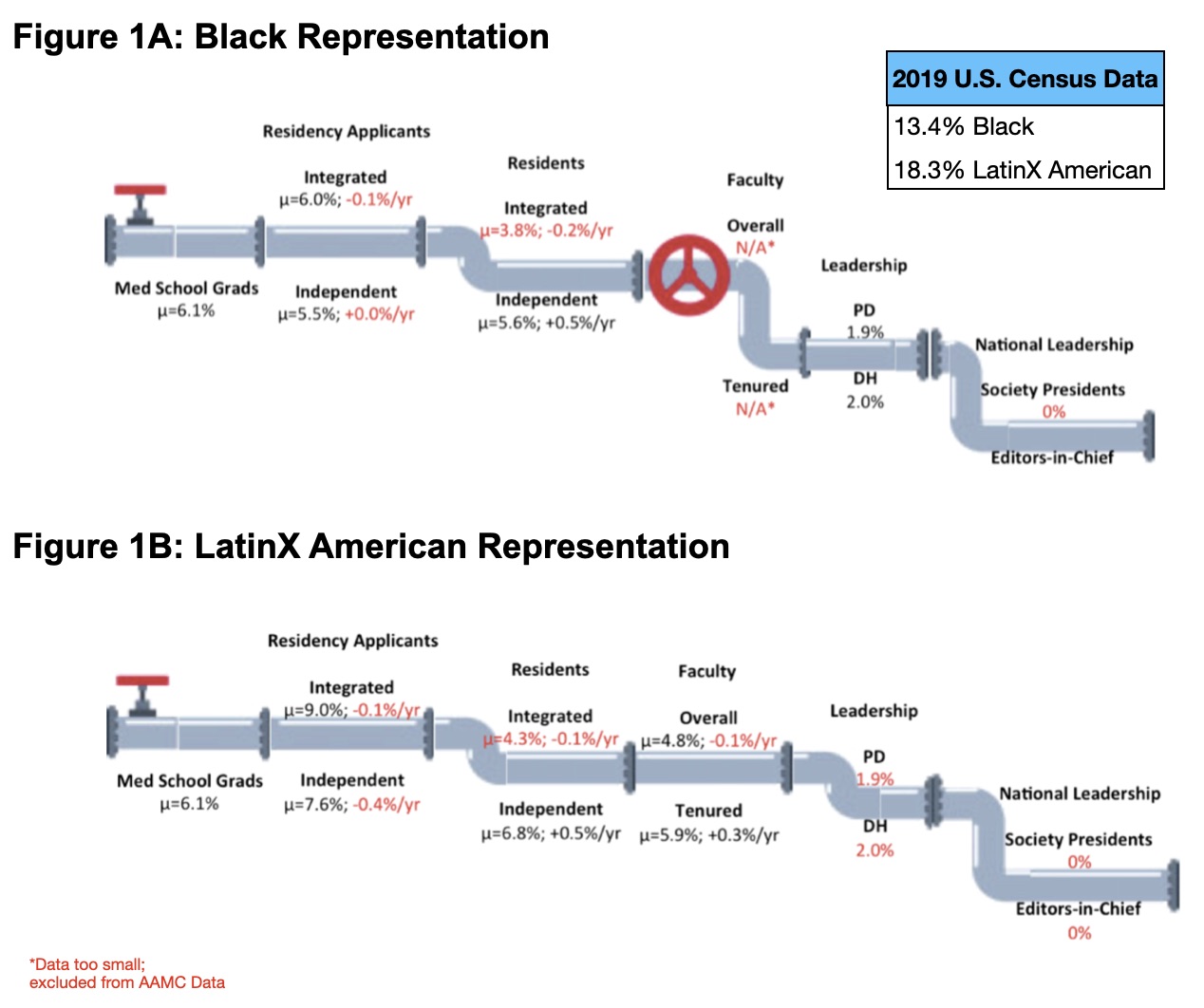Quantifying the Pipeline of Ethnically Under-Represented In Medicine (UIM) Physicians in Academic Plastic Surgery Leadership
Jennifer A. Hall, BS1, Wendy Chen, MD, MS1, Kovid Bhayana, BS2, Phoebe Lee, BS1, Elizabeth A. Moroni, MD, MHA1, Paris Butler, MD, MPH3, Carolyn De La Cruz, MD1.
1University of Pittsburgh Medical Center, Pittsburgh, PA, USA, 2Howard University College of Medicine, Washington, DC, USA, 3University of Pennsylvania, Philadelphia, PA, USA.
BACKGROUND: A recent report noted a total increase of +0.3% and +1.7% representation of Black and LatinX American plastic surgery faculty over the course of twelve years. Without accounting for rising minority populations, it would still take over 8,013 and 863 years respectively for Black and LatinX Americans to attain parity in academic plastic surgery. We report the current status of ethnically UIM physicians in the plastic surgery pipeline, from medical student graduates to national leadership positions.
METHODS: The Electronic Residency Applications Service, San Francisco Match, National Resident Matching Program, Association of American Medical Colleges, American Council of Academic Plastic Surgeons, Plastic Surgery Education Network, and professional websites for journals and national societies were accessed for racial demographic information from 2008 to 2019.
RESULTS: Over the past decade, there has been no change or slight decrease in representation of Blacks (Figure 1A) in plastic surgery residency applicants, trainees, and academic faculty, at half or less than expected, compared to U.S. Census data. The first point of drop-off occurs at the resident (3.8% of integrated and 5.6% of independent residents) to faculty level (<2.8%); almost half are lost at this point. Two percent (2%) of Program Directors (PDs) and Department/Division Heads (DHs) are black. The next point of drop-off occurs at the local to national level; there has never been a black president of ASPS or PSF, and there are no black Editors-in-Chiefs of plastic surgery journals.
Following LatinX American surgeons down the pipeline (Figure 1B) over the past decade, there has been no change or decrease in representation in residency applicants, resident physicians, and academic faculty, at one-third or less than expected compared to U.S. Census data. The first point of drop-off occurs at the faculty (4.8%) to leadership level (0% of PDs and DHs) where there is no representation of LatinX. Once this drop-off occurs, there is no recovery at the national level-- LatinX members comprise 1.54% of editorial boards, and there has never been a LatinX president of ASPS or PSF, and there are no LatinX Editors-in-Chiefs of plastic surgery journals.
CONCLUSIONS: In order to prepare our profession for imminent change in our nationís demographics, academic plastic surgery is in need of a paradigm shift now. Attrition of UIM physicians in plastic surgery begins at medical school graduation and persists through surgical training, faculty appointments, and leadership positions. Creative and innovative commitment to diversity and inclusion is necessary.

Back to 2020 Abstracts
